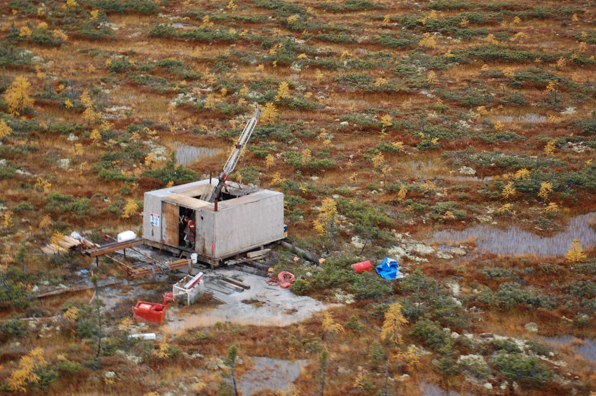Dear Ontario, there’s been way too much off-base and irresponsible commentary in the province about Cliffs Natural Resources’ decision to shelve its Ring of Fire Chromite project. And so, in the spirit of afternoon reality TV and the very best perma-tanned psychiatrists with books to peddle, it’s time we both sat down and you got a little straight talk.
Cliffs is just not that into you — As with every breakup, Cliffs’ curt parting words masked so many true feelings and motivations. In all its various pronouncements this year regarding its work suspensions, Cliffs pinned all the blame on outside parties, and was silent on the biggest reason of all for the split: chromite is a lousy business to get into right now, and its Ring of Fire development proposal, as currently conceived, is uneconomic.
Who did Cliffs blame instead? The provincial government for “delays” in the environmental approval process and other agreements, and for its high energy rates. KWG Resources for daring to exert rights on its rival claims; Local First Nations for launching judicial challenges to development; and even the region itself, for being so remote and lacking in infrastructure.
And no, this work stoppage isn’t a ploy to get cheap electricity or have the government pay for the road. Cliffs isn’t coming back. Get a grip.
The power of ‘no’ — Cliffs’ project as it was outlined in 2011 needed a ferrochrome price of about US$1.40 per lb. to generate a decent, double-digit return — the standard minimum for most mining projects to proceed. Ferrochrome’s now trading slightly above US$1, with no recovery in sight.
Cliffs’ market capitalization was $15 billion in early 2011 when it was keen to develop the Ring of Fire, but it’s now at $4 billion after touching $2.5 billion in June. Cliffs owes $3.3 billion, has $300 million in cash and only a $100-million profit in the last quarter. There’s no way it’s going to tackle a project costing $3.3 billion (if you even believe that number) right now, especially when chromite would be a new business unit for Cliffs, separate from its core metallurgical coal and iron-ore units.
Secrets of closing the sale — Cliffs won’t admit the project is uneconomic because it wants to sell it. It’s already sunk some $500 million into it, and would be happy to recoup that money, and so is loathe to talk down the asset.
The secret … of what a deposit is worth — Ontario, please stop saying the Ring of Fire is worth $60 billion. You sound like economic illiterates. If it costs $59 billion to generate $60 billion in mining revenue, the rock is worth $1 billion, not $60 billion. Worse, it gets people thinking they’re getting ripped off when they’re not, and creates false expectations, like former Premier Dalton McGuinty foolishly calling the Ring of Fire “Ontario’s oilsands.” Cliffs’ plans would have generated revenues of anywhere from $500 million to $1.5 billion annually, which is about the same as any single decent, large mine in Canada.
Build it and they may not come — Ontario’s policy-makers need to realize chromite is not gold or diamond, or even nickel — all large commodity markets where a new mine can be readily absorbed. Chromite is a tiny, stable market with established, low-cost suppliers in South Africa, Kazakhstan, India, China and Brazil. Cliffs’ modest development plan of a 12,000-tonne-per-day open pit mine would have added a whopping 5% to the global chromite supply. Did you notice Cliffs never had any presentations extolling the incredible market deficits in chromite and listing all the buyers it had lined up? It’s because there weren’t any.
The road less travelled — The kerfuffle with KWG Resources over the easement rights (KWG won) was not a factor in Cliffs’ decision. The road Cliffs was looking to build would have cost $600 million, and buying KWG outright in order to get the easement rights could be done today for just $60 million — plus Cliffs would get all their mineral assets.
Man’s search for meaning — You ask, ‘Why now, Cliffs?’ The answer is simple: internal Cliffs politics. Cliffs went into expansion mode during the boom times in 2005 with exploration ventures, JVs and later the chromium business. Cliffs just got a new president from outside the company, Gary Halverson, who is extremely knowledgeable of Ontario mining after long stints at Barrick and Kinross. Halverson killed the Ring of Fire project only a couple of days after taking the reins at Cliffs.
Stop pointing fingers — Both provincial opposition parties have loudly blamed Cliffs’ departure on the ruling provincial Liberals, supposedly for being too slow to show support and fumbling in its dealings with First Nations. These are cheap political shots. Are we really going to let the departure of a big American corporation that doesn’t care about us divide us, or are we going to work together in good faith to create economic opportunity in northern Ontario?
Stephen Harper’s not your Big Daddy — According to the CBC, the Ontario government was surprised when Prime Minister Stephen Harper dismissed development in the Ring of Fire region as the province’s problem, rebuffing repeated calls for the federal government to play a role. Please, Ontario. You’re all grown up now, and the time is long gone to be running to daddy for a handout.
Tomorrow is another day — The Ring of Fire is a young camp, having only been discovered in 2008, with plenty of potential and lots of active juniors like KWG and Noront. Don’t give up. There’s now more time and breathing space for all players to come together, accommodate each other and come up with more intelligent approaches with respect to infrastructure options, First Nations issues and tackling world chromite markets.
RELATED:
TNM editor-in-chief talks Ring of Fire on CBC Radio (Nov. 22, 2013)
Cliffs shelves Ring of Fire chromite project
Editorial: KWG-Cliffs ruling – No appeasement on the easement
Northern Miner editor-in-chief discusses the Ring of Fire on CBC Radio (June 28, 2013)





Be the first to comment on "Editorial: The Cliffs Notes on the Ring of Fire"